Fashion and Music: The Rhythmic Relationship Between Style & Sound
18/05/2024 2024-09-21 13:15Fashion and Music: The Rhythmic Relationship Between Style & Sound
Fashion and music have a correlation, of style and sound have always been a strong cultural and self-expression determinants. Over time, music and fashion, as two pillars of artistic creativity, have been in an interdependent relationship that has greatly influenced each other in profound ways than anyone would expect.
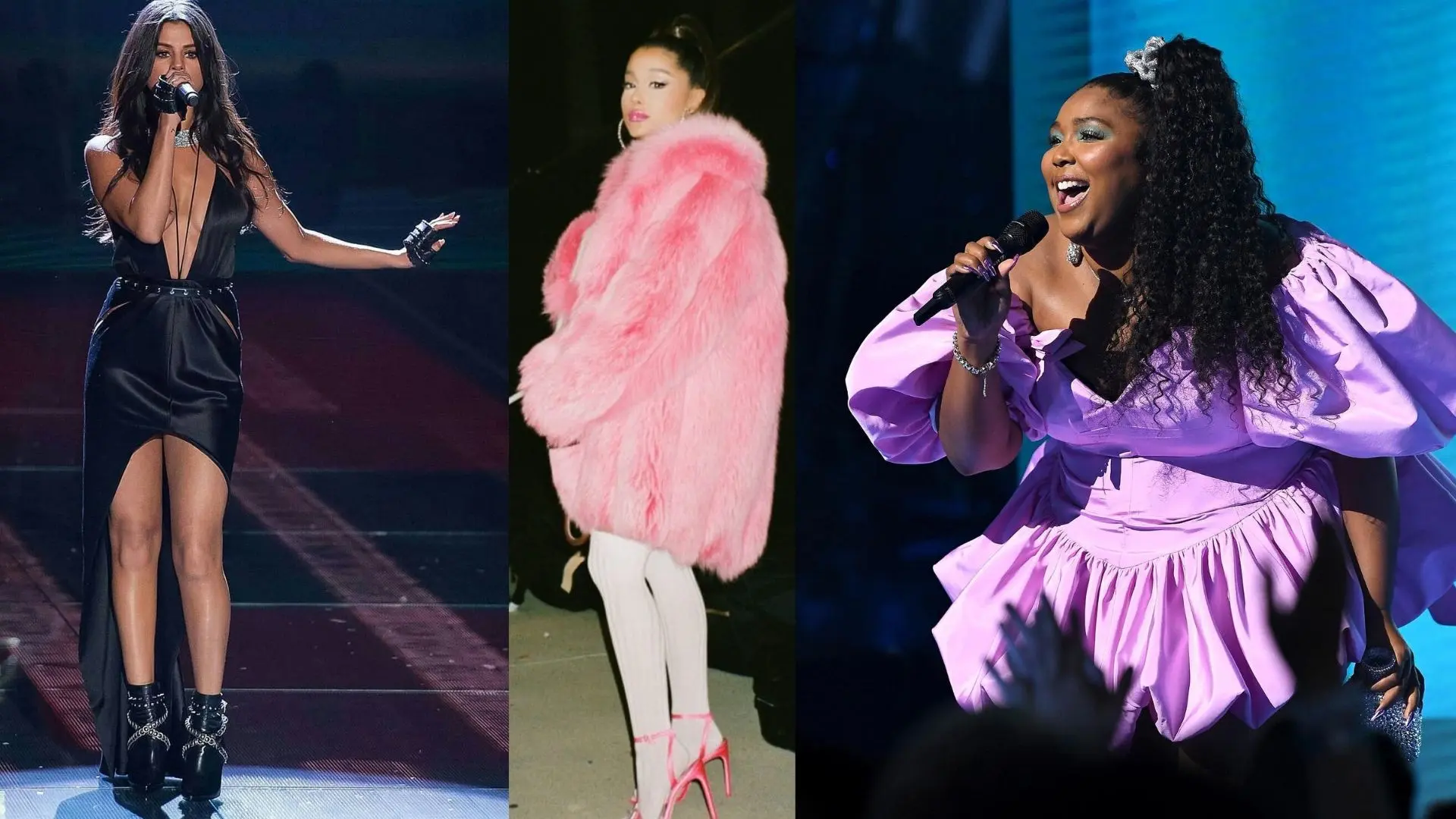
Harper’s BAZAAR
This demonstrates how the fusion of fashion and music has not only defined various eras but also served as a platform for personalization in addition to social observation.
In this article, we explore the rhythmic connection between music and fashion by following its changes, starting from jazz-age flapper styles infused with beats in the 1920s up until grungy outlooks rocking the 1990s era among many more years ahead.
The Rhythmic Relationship Between Style & Sound
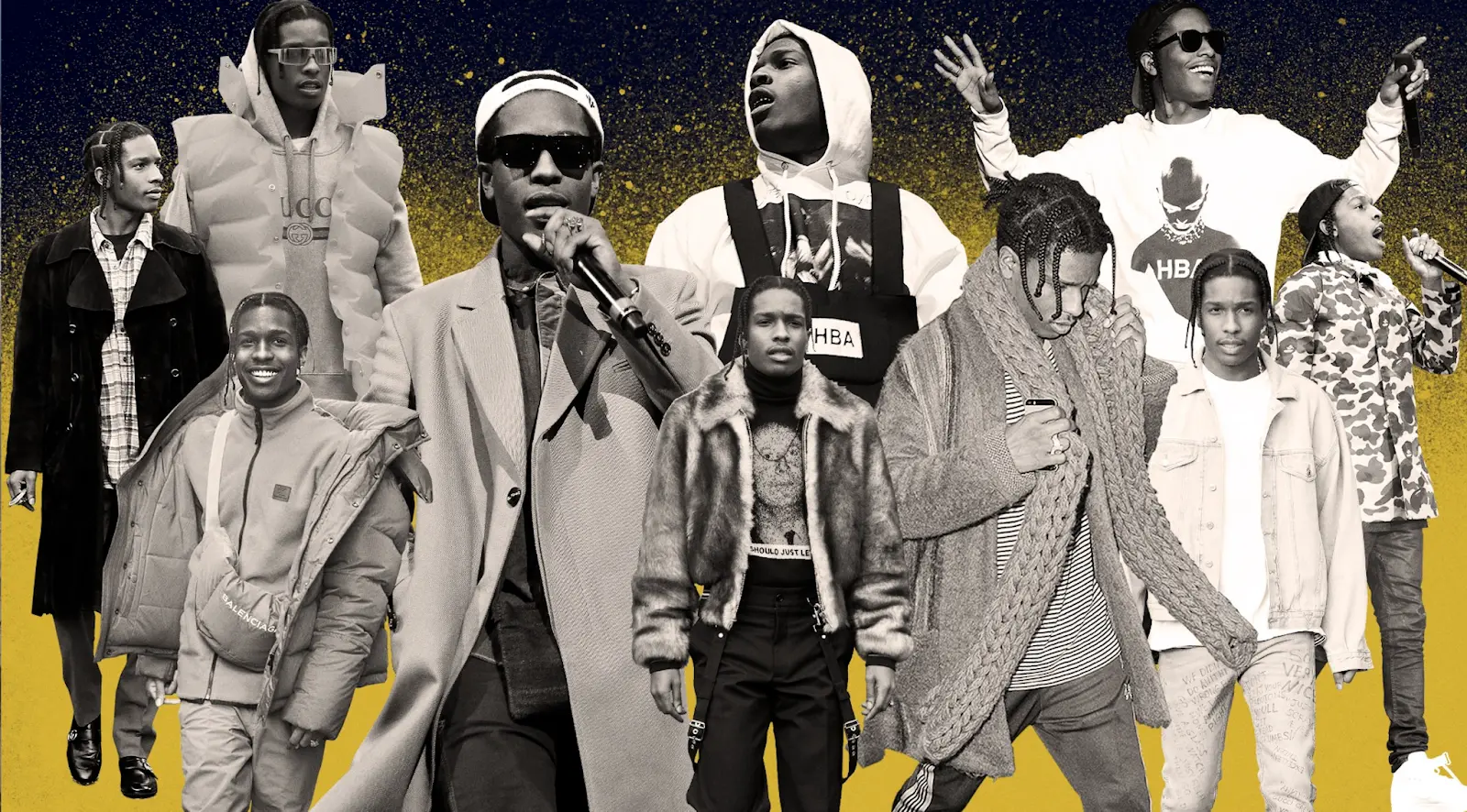
Afterglow ATX
Music and fashion, both significant forms of creativity and self-expression in our society, have had a long-established connection. This has always been the case because of culture and other external factors, which result to either or both forms of art becoming dynamic and ever-changing.
Music does influence fashion designers; also, it is influenced by the wave of clothing that comes in line with its change in trend over time as seen within different generations.
Fashion has grown into a unique part of music culture throughout history, essentially being the face through which artists are recognised. An artist can promote their music by creating a unique stage presence, like Prince’s elegant purple attire or Avril Lavigne’s “skater girl” aesthetic.
Many musicians today have their own clothing lines, while others collaborate with different fashion brands, thus making current-day musical trends closely related to what people wear or put on their bodies.
They could also be paid to include specific brands or goods in their music videos, thereby furthering this relationship between fashion industry players like designers, models, etcetera vis-a-vis music creators such as singers, who may need this kind of publicity for themselves too.
Since fans often look up to their idols for inspiration, stars act as trendsetters most of the of the time. For instance,’mop top’ haircuts together with collarless suits were popularised by The Beatles, which are still trendy now among other things they did during their time.
Evolution between the Worlds
Music, as history demonstrates, affects fashion greatly. Music and fashion are both arts that can be felt and shared by anyone on the street. They have always been used to show who one is.
Fashion designs, like music, serve as a social barometer; it tell us more about ourselves than we realise. You don’t need to be an expert to tell the difference between hippy bell bottoms in 1969 and emo-skinny jeans in 2005.
It’s not surprising that these two worlds became so closely knit when you consider how music changed from being an easily digestible form of entertainment into a way for people to voice their individuality, political beliefs or even just vent some frustrations.
Every decade of the past century practically saw how music would inspire fashion (and vice versa). But it wasn’t until the next few decades that we’d come to see just how much music was influencing what we wore on our bodies.
1. Flappers of the 1920s
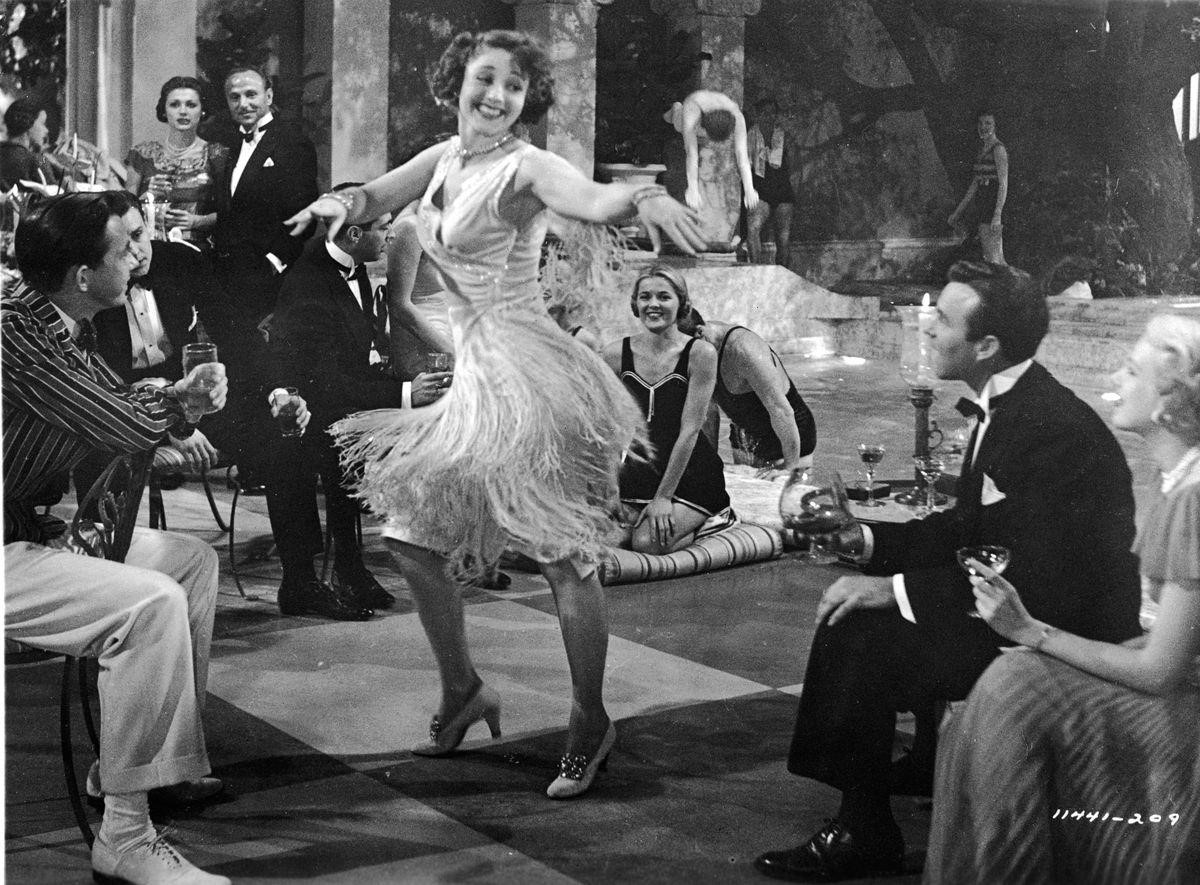 Racked
Racked
Jazz appears innocent now, but during its infancy, it was one of the first genres to be played in clubs that were open to people of all races.
Feminism found a strong voice in jazz music and changed women’s fashion and behavior. Many female fans of jazz dressed like flappers.
These feminists defied traditional gender expectations by wearing short skirts instead of long dresses or skirts that restricted movement when they danced for hours on end in loose-fitting clothes.
2. Teen Pop of the 1950s
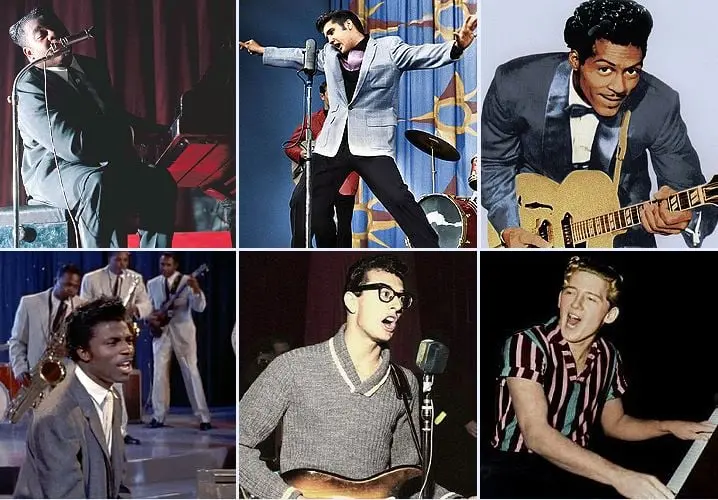
Rockmusictimeline
Most fashion companies did not care about teenagers and only catered to what adults wanted even though the Roaring Twenties happened and it affected the flapper fashion. The television, movies, and music being more accessible to everyone in the 1950s changed that.
There was a new demand for attire resembling that worn by movie stars and rock and roll musicians as celebrities like Elvis Presley rose to fame.
When the teen market grew too big for designers to ignore, they started their own businesses in the adolescent fashion industry.
3. Mods and Hippies of the 1960s
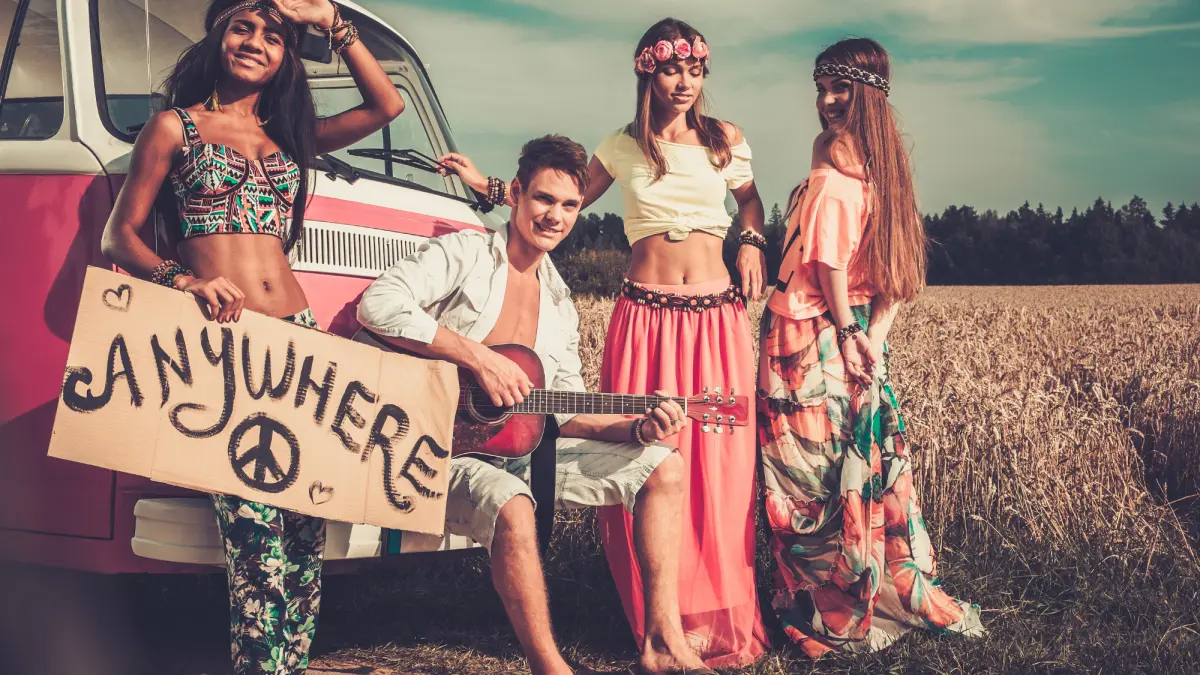
Bellatory
A swinging time in London during the 1960s saw jazz turn into a more contemporary form and the rise of what was considered modernist. Through fashion show and music Ska, R&B, and soul were among the popular genres of music within this 60s counterculture.
It seemed natural that those who were part of this “modernism” movement would have taken on an appearance since they also embraced Beatniks’ bohemian lifestyle from the fifties. The mod is a term used for groups of club-going kids obsessed with clothes.
By the mid-sixties, beatnik-meets-mod fashion adopted by mods had become one of high fashion’s most important moments ever. Right up until today, leading designers find inspiration from recent pasts such as these when music and art still have life in them for contemporary styles to feed off of.
4. Punk and Glamrock of the 1970s
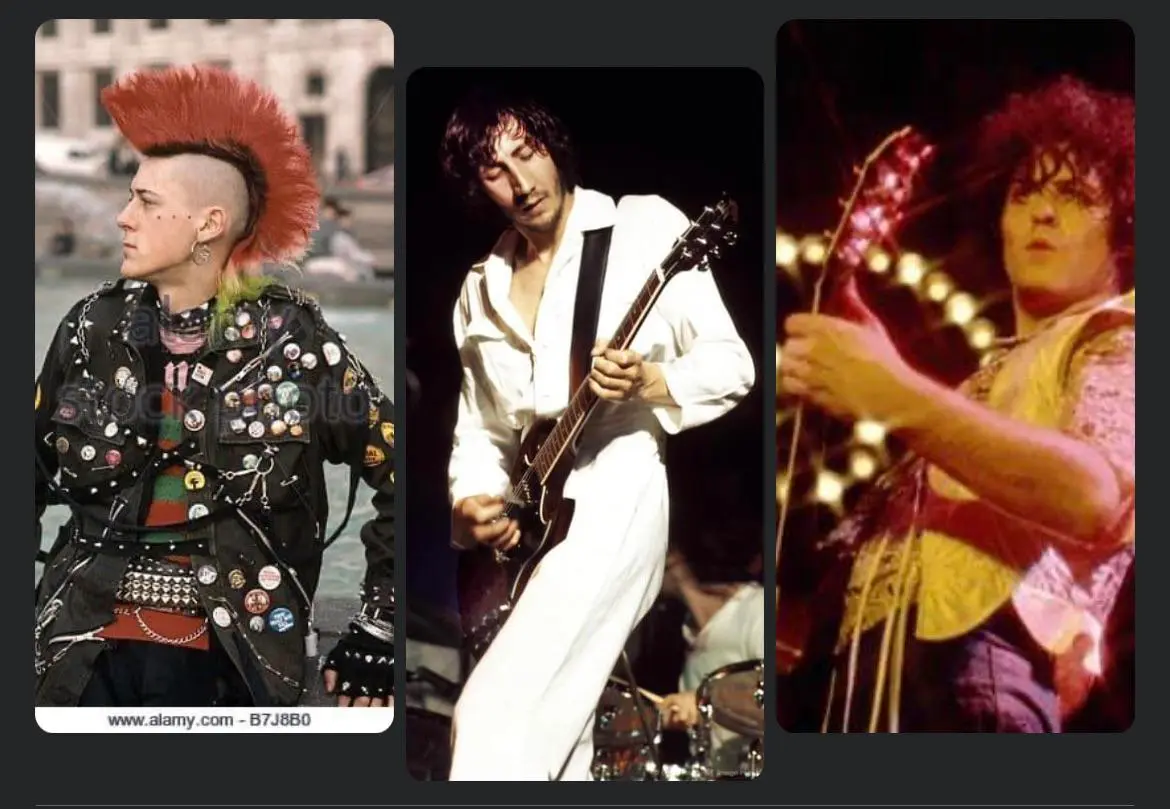
Many of the initial punks were into the same music as Mods, like ska, reggae, and soul. But this rock was violent and had few ska influences at all according to the punk scene. Heavily influencing fashion music.
Social problems became part of the punk cause in a very short time. People joined punk because it was so individualistic and independent that it seemed like a good way to give the establishment the finger.
So they usually wore things like leather jackets, brightly colored hairdos, or piercings — anything that didn’t look normal. The first real musical subculture is punk, followed closely by glam rock in most people’s opinion.
5. Goth of the 1980s
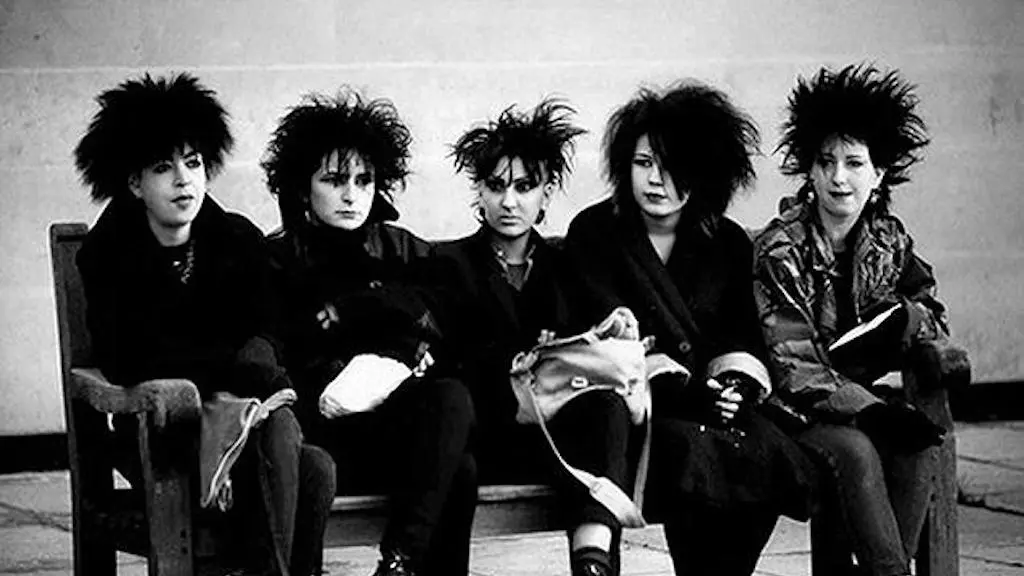
Goth music is one of the most prominent offshoots of glam rock. Death Rock, as gloomy and depressing as it sounds, is the birthplace of goth music. Synthpop, new wave, and several other genres related to death rock emerged.
Most of these sad subcultures were associated with other things such as wearing only black clothes, being a horror movie buff, light makeup, dark red lipstick and just having an appreciation for the darker side of life.
Some early examples in Gothic fashion subculture imitated the spookier aspects with ‘witchy’ looking clothes that many characters from Tim Burton’s films often wore.
6. Grunge and Hip-Hop of the 1990s
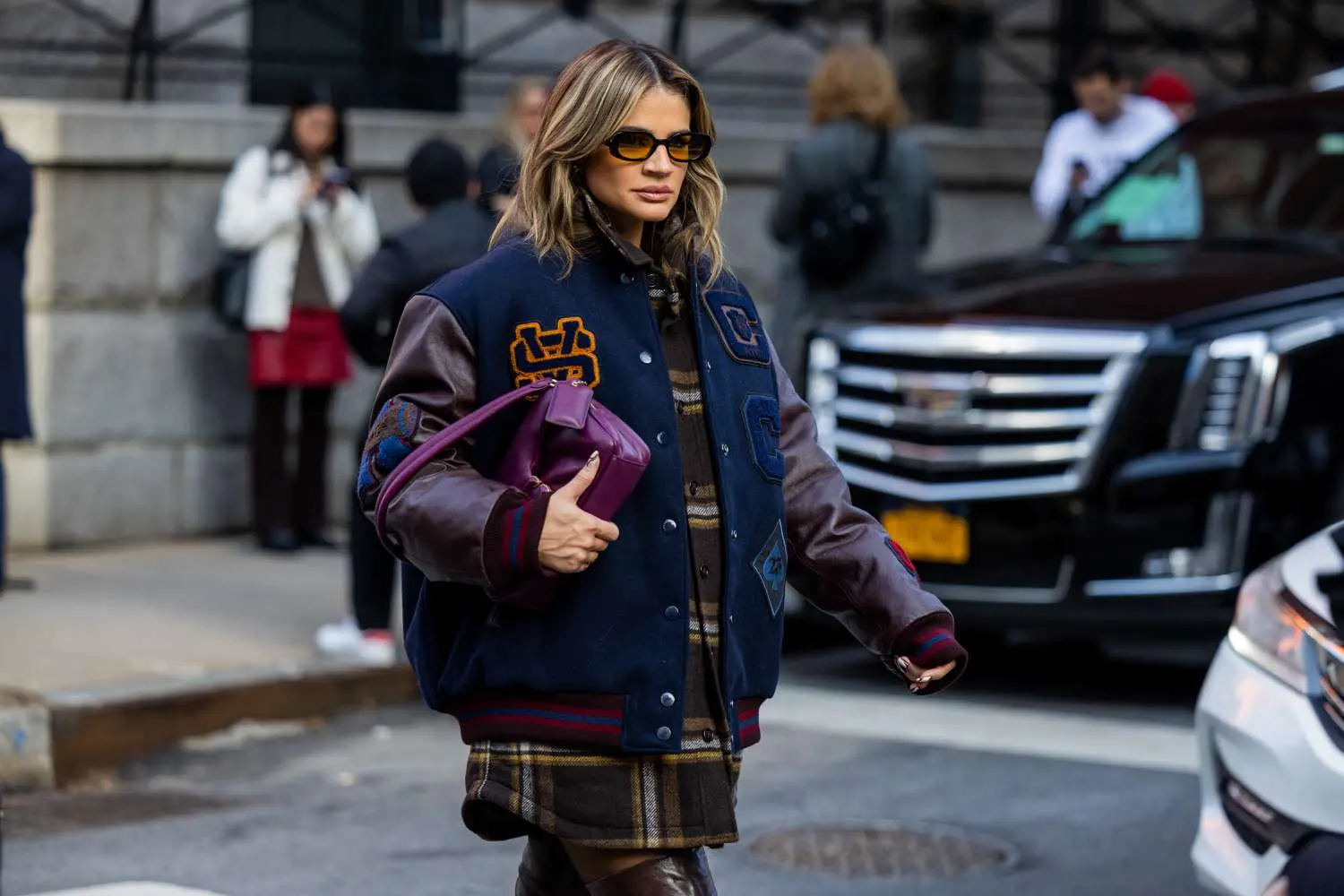
During the 1990s, teenagers created Grunge as a way to express their dissatisfaction with suburban life and everything outside it. These kids played in garage bands and hated how everything around them was so commercial.
It didn’t take long before someone like Kurt Cobain put all that into music, which resonated with an entire generation of angsty teens. But they weren’t just attracted by its raw sound — anyone who liked the roughness should have loved their unkempt look too.
Marc Jacobs made this style famous when he started using it himself. You can still see elements from the 90s grunge movement in fashion today.
7. EDM (Electronic Dance Music) of 2010s
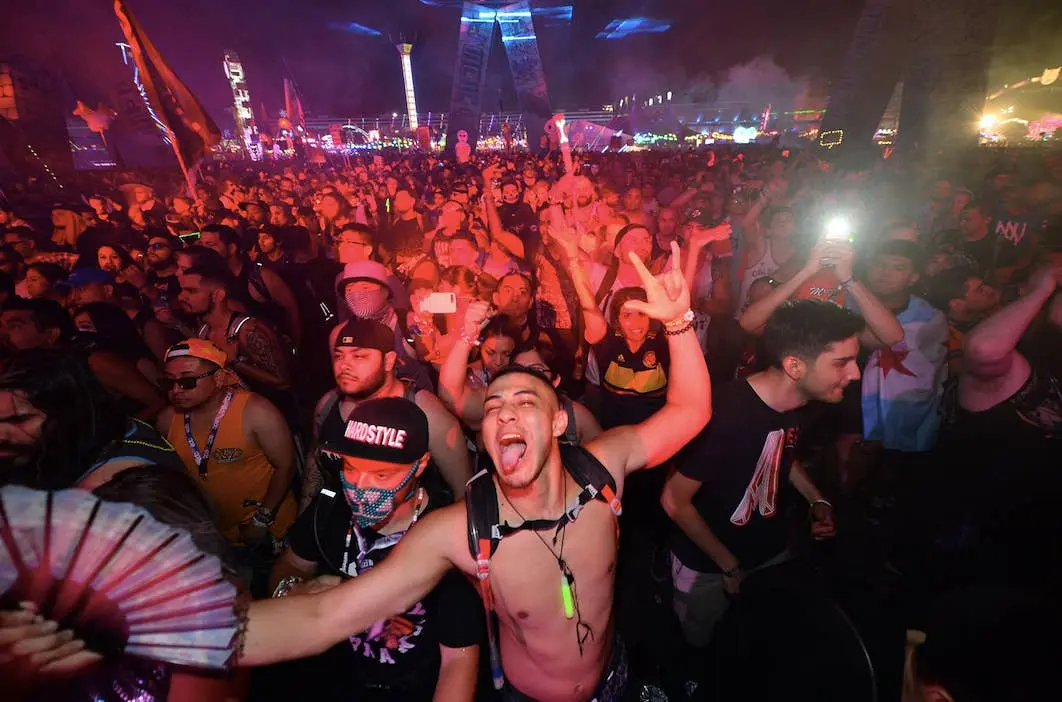
In the 1990s, warehouses hosted Raves (Radical Audiovisual Experiences) that fostered an underground electronica scene. The gatherings had been meant to communicate peace and love among other things through loud beats, DJ battles, and copious amounts of drugs.
While it’s true that rave culture made a comeback with glowy wings, UFO pants and leg warmers in the early 2000s–oh yeah, and tiny bikinis too–the subterranean Electronic Dance Music (EDM) movement never really died out.
As we enter the next decade — the 2020s — mainstream pop stars such as Dua Lipa, Arianna Grande, Lil Nas X, and Harry Styles are blending music with gender-bending fashion.
Collaboration between Style and Sound
Fashion and music have been transformed in the past by some of the greatest partnerships ever made. We will discuss what they did to each sector.
1. Billabong and Metallica
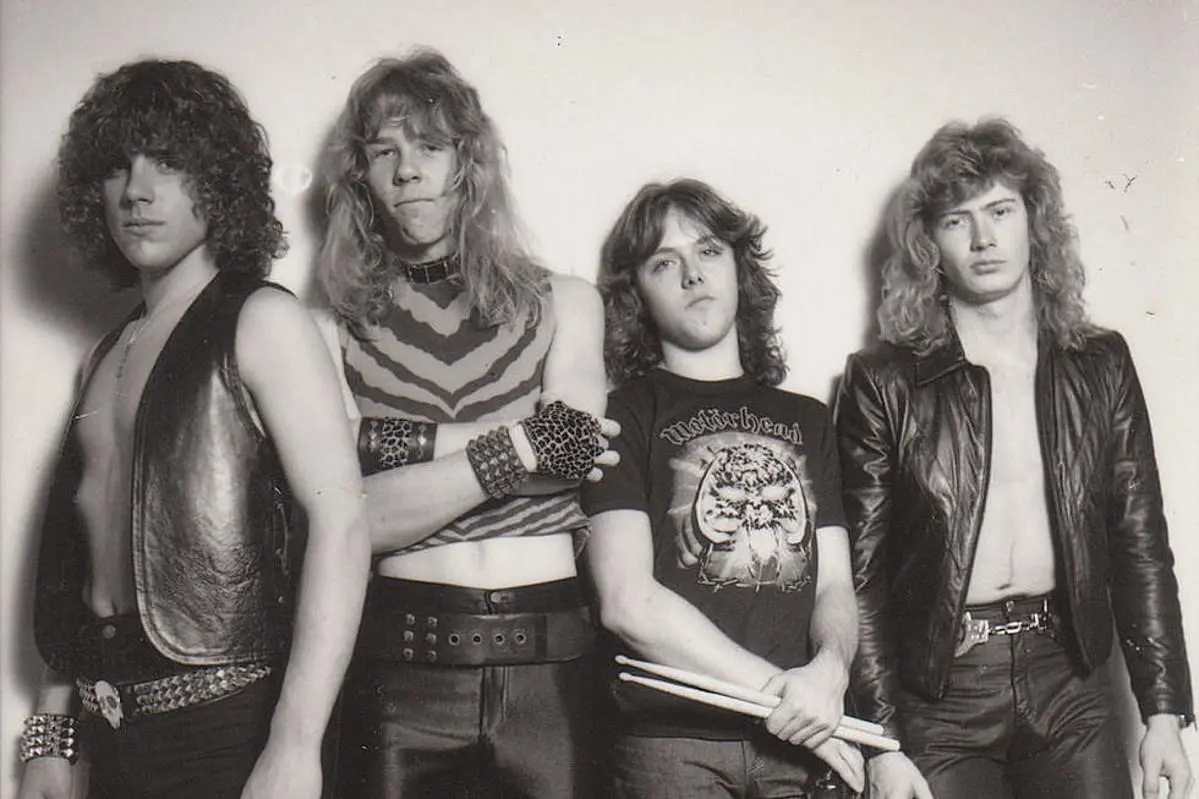
In October 2019, Billabong, an Australian brand, partnered with Metallica to release a collection.
This five-part collaboration features board shorts, wetsuits and fleeces which are all marked with the band’s logo. One of these is a December surf wear collection that pays tribute to professional surfer Andy Irons.
All of the money made from this line will be given to the athlete’s foundation and its youth outreach program. In January comes Ride The Lightning after October’s Black Album followed by February’s Master Of Puppets and another yet-to-be-revealed drop later on in the month – each named by other albums by Metallica.
2. Crocs and Post Malone
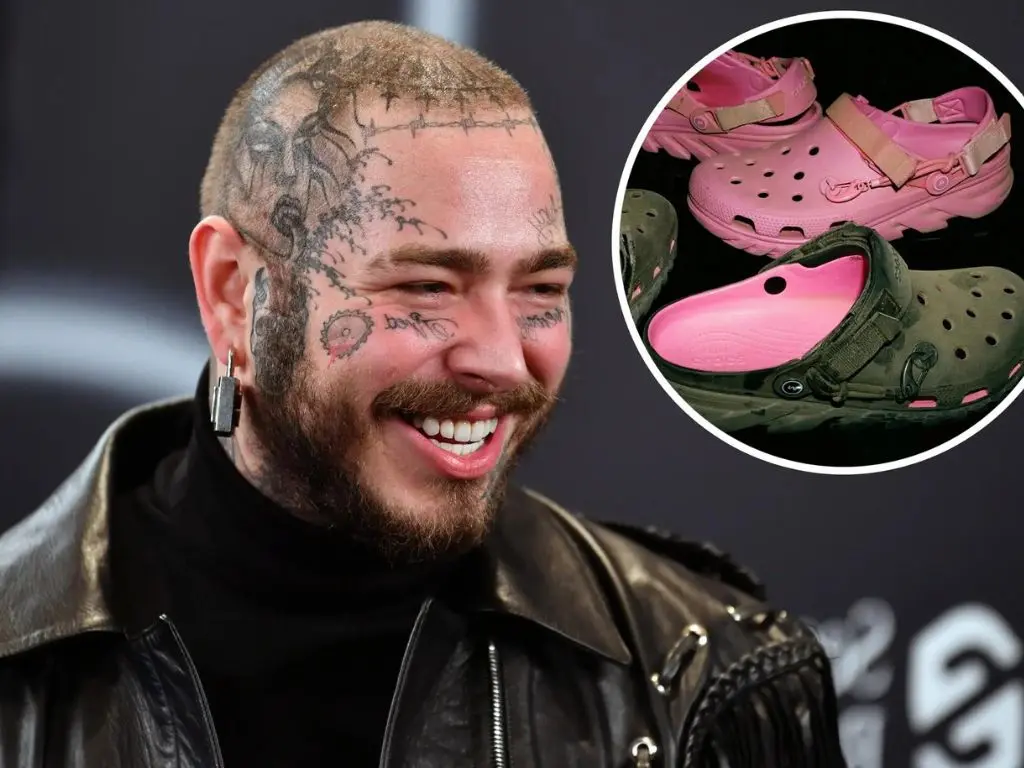
Crocs are having a moment with millennials and Gen Zers, probably because of their ridiculously trendy design, so it makes sense that Post Malone would want to make his own.
The face-tatted artist teamed up with Crocs yet again for a new take on the classic clog.
And yes, when Post Malone debuted at No. 1 on Billboard’s Rock Chart with “Take What You Want” from Hollywood’s Bleeding, he officially became a rock star — even if we’re not sure what Ozzy would think of these rubber kicks.
3. Dakine and The Grateful Dead
During the 1960s, a band known as The Grateful Dead worked with several companies such as Primal Wear and Chacos to produce cycling jerseys and footwear respectively. Recently, these rock legends from Palo Alto have collaborated with Dakine to design mountain gloves that feature their famous skull logo with a lightning bolt running through it.
These leather mittens were named Benchetler x Grateful Dead Signature Series after skier and influencer Chris Benchetler. They also come equipped with a soft wool lining that offers protection against storms all day long while still allowing for flexibility in rough conditions; they are very well insulated too and will keep your hands warm throughout winter!
4. Ramones and Happy Socks
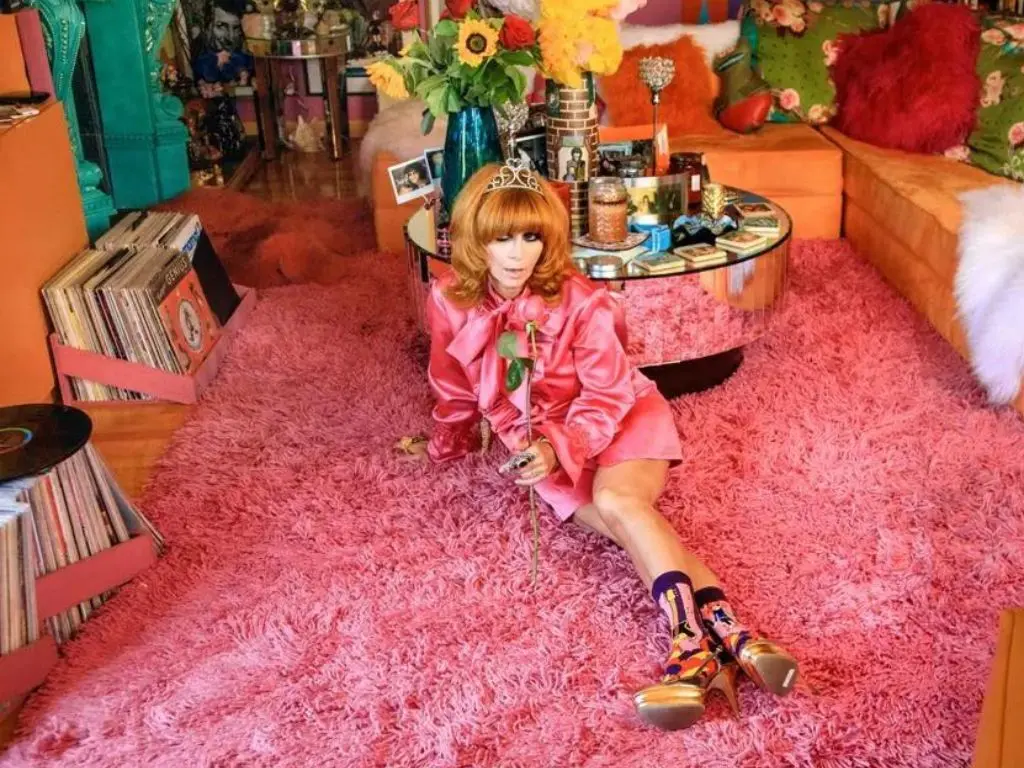
Almost all of Rock’s famous partnerships had imperfect finishes. But the latest special edition from Happy Socks, named after Linda and Johnny Ramones, is a punk rock love letter to our feet if there ever was one.
The line commemorates the romance between the Ramones guitarist and the iconic fashion designer, with four socks emblazoned with cute, colorful images of hearts, guitars and two people scribbling in each other’s notebooks in the style of high school sweethearts.
5. Stance and Nirvana
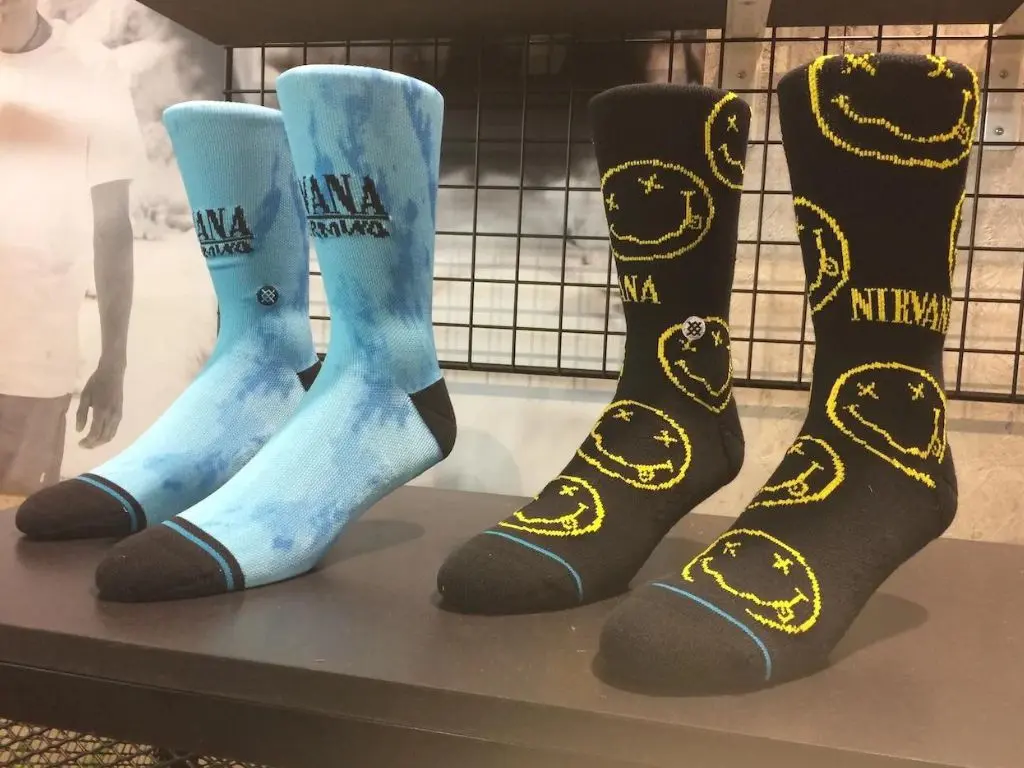
In the past, Stance Socks has worked with iconic bands such as Metallica, The Ramones, Notorious BIG, Wu-Tang, and Jimi Hendrix among others. This time around, they are partnering up with Nirvana to create crew-length socks modeled after the grunge kings.
One set features the band’s famous smiling face logo while another depicts the cerulean pool graphic from their Nevermind album. Sole cushioning, arch support, and a durable sock construction keep the design from stretching out of shape.
Conclusion
History, meanwhile, keeps witnessing the mutual impact of music and fashion on each other.
It can be seen that throughout time, style has always been reflecting and accompanying the development of music in various genres. The best example is flapper dresses worn by young women who were keen on jazz during the 1920s; another one could be grunge clothing which was influenced by the music filled with depression such as that sung in the early 90s.
What’s more, when artists join forces with brands from the fashion industry, they not only give their followers limited edition stuff but also help both fields come closer together by creating new unusual joint collections.
Billabong X Metallica or Crocs customised by Post Malone – these are just a few instances proving how much impact a combination of sound and style may have on people. These are the examples of the fashion and music collaborations. These have been in collaboration for a very long and it will remain the same in the future as well.














